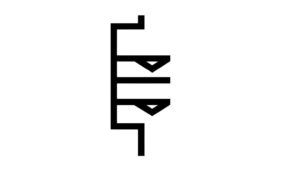What Is the Symbol for Track and Field?
Track and field is symbolized by various elements that reflect its rich history and values. Starting blocks, a stopwatch, and the relay baton are iconic symbols representing explosive beginnings, precision, and teamwork respectively.
The high jump bar and hurdles signify the challenges athletes face. Emblems like torches, flames, medals, and podiums encapsulate the spirit of achievement and recognition.
These symbols transcend cultural boundaries, honoring the sport's heritage from ancient Greek competitions to modern global events. Each element offers a glimpse into the diverse and unifying nature of track and field, promising deeper insights into its profound impact.
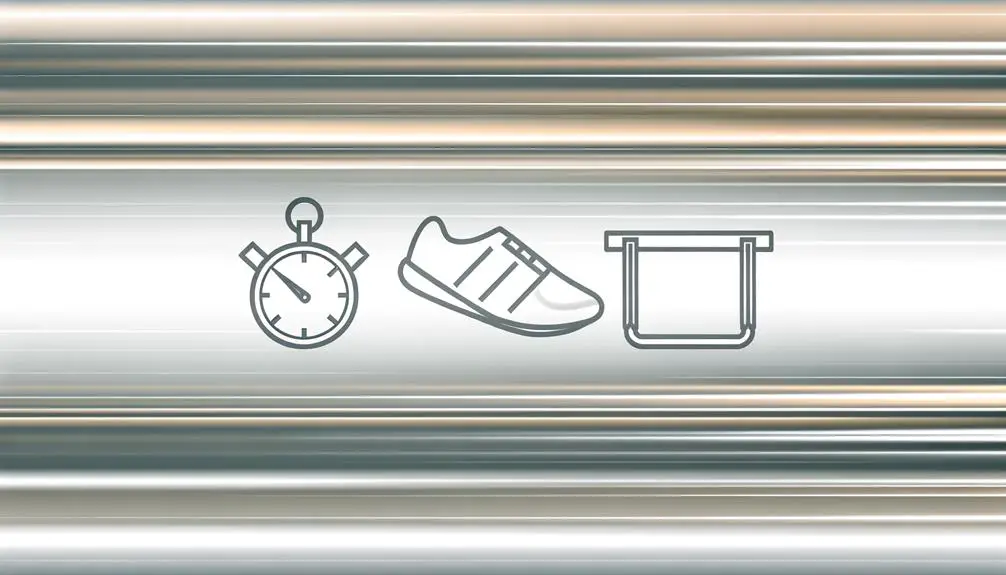
Key Takeaways
- Starting blocks symbolize the explosive beginning of races in track and field events.
- The stopwatch represents precision timing and the pursuit of peak athletic performance.
- The relay baton embodies teamwork and coordination essential in relay races.
- The high jump bar and hurdles signify the challenges and obstacles athletes must overcome.
- Olympic torches and flames symbolize the enduring spirit and quest for achievement in track and field.
Historical Origins
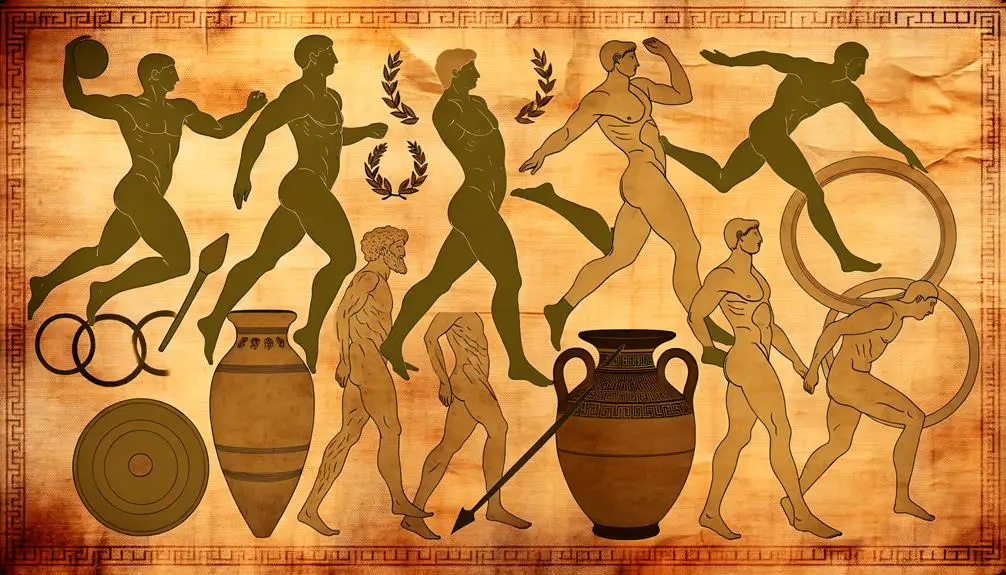
Track and field, as a sport, traces its origins back to ancient civilizations, where it was an integral part of both Greek and Roman athletic competitions. The ancient Olympic Games, first held in 776 BC in Olympia, Greece, featured events such as running, long jump, and discus throw.
These early competitions celebrated physical prowess and were often intertwined with religious festivals and ceremonies. Similarly, the Romans adopted and adapted these events, incorporating them into their own public spectacles and military training exercises.
Over centuries, track and field evolved, with standardized rules and events emerging in the 19th century during the rise of modern athletics. This evolution laid the foundation for the sport's current global structure and practices.
Iconic Symbols
As track and field evolved into a modern sport with standardized events, it also developed a rich array of iconic symbols that represent its storied history and the spirit of athletic competition.
Among these symbols, the starting blocks are emblematic of the explosive beginnings of races, symbolizing preparation and potential.
The stopwatch signifies precision and the relentless pursuit of peak performance.
The relay baton, passed between team members, embodies teamwork and coordination.
Additionally, the high jump bar and hurdles represent the challenges athletes overcome.
Each of these symbols not only serves practical purposes within the sport but also encapsulates the values of perseverance, excellence, and unity that are central to track and field.
Cultural Significance
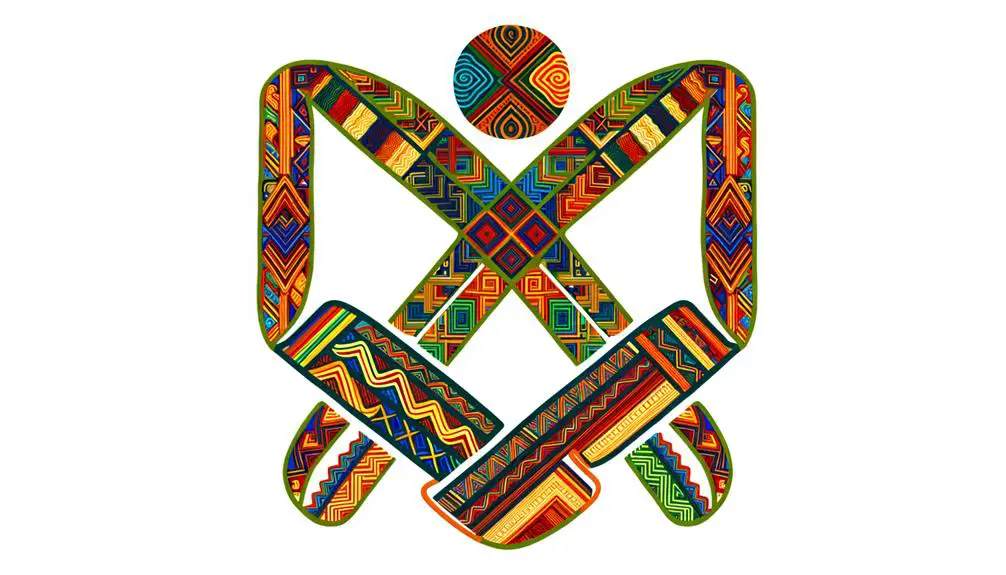
How has track and field, with its universal appeal and diverse events, become a potent symbol of cultural identity and societal values across the globe?
Track and field epitomizes the pursuit of excellence and human potential, transcending cultural and national boundaries.
The sport's rich history, from ancient Olympic Games to modern international competitions, has woven it into the fabric of countless societies.
Its varied disciplines—sprints, distance running, jumps, and throws—mirror the diversity of human physical capabilities and cultural traditions.
Additionally, the universality of track and field fosters a sense of global unity and shared values, such as perseverance, fair play, and the celebration of individual and collective achievement.
This way, it stands as a powerful emblem of cultural significance worldwide.
Modern Interpretations
In contemporary society, track and field continues to evolve, reflecting modern values and technological advancements while maintaining its timeless appeal. Athletes now benefit from innovations in training methods, equipment, and performance analytics, which enhance their capabilities and redefine competitive standards.
Additionally, the sport increasingly embraces inclusivity, promoting opportunities for diverse populations, including para-athletes and gender-diverse participants. Environmental sustainability also plays a role, with eco-friendly materials and energy-efficient facilities becoming more prevalent.
Media and digital platforms have transformed fan engagement, enabling real-time updates and broadening the audience base. These modern interpretations not only preserve the historic essence of track and field but also guarantee its relevance and dynamism in the 21st century, fostering a global community of enthusiasts and participants.
Symbolism in Competitions
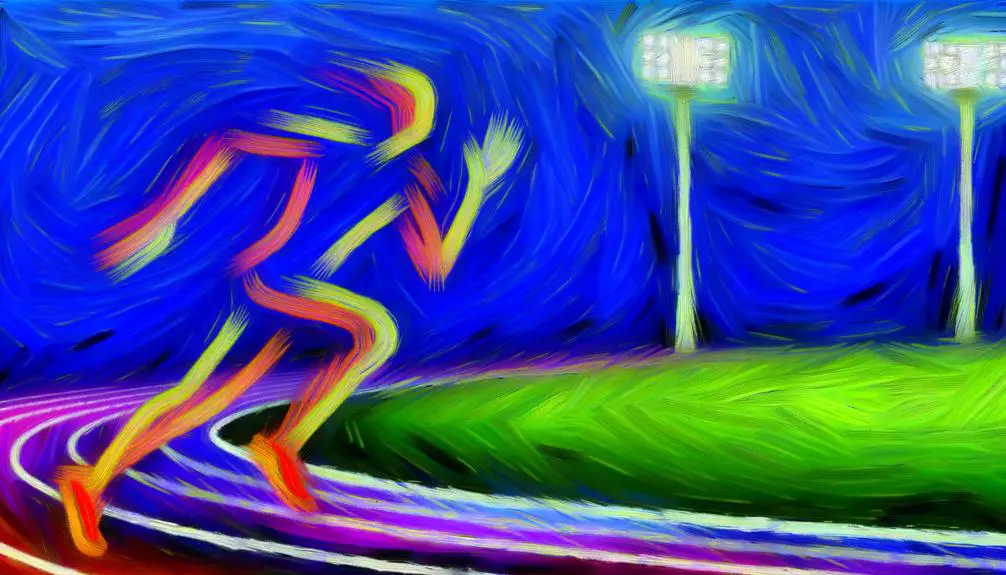
Symbols and rituals play an essential role in track and field competitions, serving as powerful representations of the sport's heritage, values, and aspirations. The use of specific symbols enhances the experience and creates a sense of unity among athletes and spectators alike. These elements often encapsulate the spirit of competition and the pursuit of excellence.
Key symbols include:
- Torches and flames: Representing the continuity of the Olympic spirit and the enduring quest for achievement.
- Medals and podiums: Emblems of victory and recognition, symbolizing hard-earned success and dedication.
- National flags and anthems: Fostering national pride and camaraderie, signifying the global nature of track and field events.
Such symbols not only honor tradition but also inspire future generations to aspire toward greatness.
Conclusion
To conclude, the symbol for track and field has evolved from ancient insignias to modern icons, reflecting the sport's rich historical tapestry and its enduring cultural resonance.
Critics might argue that such symbols are mere graphical representations; however, their profound impact on athletes and spectators alike cannot be understated.
These symbols encapsulate the essence of human endeavor and competition, serving as a timeless reminder of the pursuit of excellence and the unifying power of sport.


